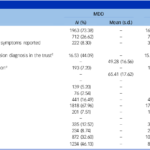2025-03-24 マックス・プランク研究所
<関連情報>
- https://www.mpg.de/24380519/cracking-the-code-of-protein-degradation
- https://www.cell.com/molecular-cell/fulltext/S1097-2765(25)00152-2
UbiREADによるホモ型および分岐型K48およびK63ユビキチン鎖のプロテアソーム分解コードの解読 UbiREAD deciphers proteasomal degradation code of homotypic and branched K48 and K63 ubiquitin chains
Leo Kiss∙ Leo C. James∙ Brenda A. Schulman
Molecular Cell Published:March 24, 2025
DOI:https://doi.org/10.1016/j.molcel.2025.02.021
Graphical abstract

Highlights
- UbiREAD systematically compares intracellular degradation of defined substrates
- Cellular degradation occurs rapidly with a half-life of 1 min for a GFP
- K48-Ub3 is a cellular proteasomal targeting signal
- Branched ubiquitin chains are not a sum of their parts but show a functional hierarchy
Summary
Ubiquitin chains define the fates of their modified proteins, often mediating proteasomal degradation in eukaryotes. Yet heterogeneity of intracellular ubiquitination has precluded systematically comparing the degradation capacities of different ubiquitin chains. We developed ubiquitinated reporter evaluation after intracellular delivery (UbiREAD), a technology that monitors cellular degradation and deubiquitination at high temporal resolution after bespoke ubiquitinated proteins are delivered into human cells. Comparing the degradation of a model substrate modified with various K48, K63, or K48/K63-branched ubiquitin chains revealed fundamental differences in their intracellular degradation capacities. K48 chains with three or more ubiquitins triggered degradation within minutes. K63-ubiquitinated substrate was rapidly deubiquitinated rather than degraded. Surprisingly, in K48/K63-branched chains, substrate-anchored chain identity determined the degradation and deubiquitination behavior, establishing that branched chains are not the sum of their parts. UbiREAD reveals a degradation code for ubiquitin chains varying by linkage, length, and topology and a functional hierarchy within branched ubiquitin chains.


